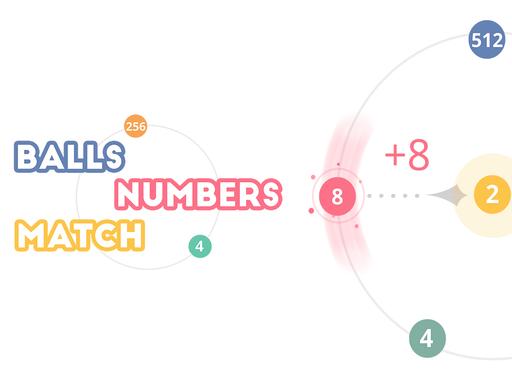Introduction and How to Play Texas Hold’em Poker
Texas Hold’em is one of the most popular variations of poker played worldwide, both in casual settings and competitive tournaments like the World Series of Poker (WSOP). It combines strategy, skill, and luck, and is often regarded as the ultimate test of poker prowess. In Texas Hold’em, players compete to make the best possible five-card hand, using a combination of two private cards (known as “hole cards”) and five community cards. The goal is to create the strongest hand or to bluff your opponents into folding.
This article will provide a detailed guide on how to play Texas Hold’em Poker, explain the basic rules, offer strategies for success, and outline tips for both beginners and seasoned players.
What is Texas Hold’em Poker?
Texas Hold’em is a community card poker game that uses a standard 52-card deck. The game is played with two to ten players at a table, and each player is dealt two private cards (hole cards) that are kept hidden from the others. Five community cards are then dealt face-up in the middle of the table, and all players use these cards, combined with their hole cards, to make the best possible five-card hand.
The game consists of four betting rounds, and players can fold, check, call, raise, or bet during each round. The winner of the hand is either the player with the best hand at showdown or the last player remaining after all others have folded.
Basic Rules of Texas Hold’em Poker
- The Blinds:
- The game starts with two forced bets, called the “blinds,” to ensure there is action in every hand. The player to the left of the dealer posts the small blind, and the player to their left posts the big blind. These blinds initiate the betting for the hand.
- Dealing the Hole Cards:
- Each player is dealt two private cards (hole cards) that only they can see.
- The First Betting Round (Pre-Flop):
- After the hole cards are dealt, the first round of betting begins with the player to the left of the big blind. Players can fold (discard their hand), call (match the current bet), or raise (increase the bet).
- The Flop:
- After the first round of betting, three community cards are dealt face-up in the middle of the table. These cards are shared by all players, and players now have a combination of their two hole cards and the three community cards.
- The Second Betting Round:
- After the flop is dealt, a second round of betting begins, starting with the player to the left of the dealer. Players can check (pass the action to the next player), bet, call, raise, or fold.
- The Turn:
- The fourth community card (called the “turn”) is dealt face-up. This card is added to the community cards available for all players to use. A third round of betting follows.
- The River:
- The fifth and final community card (the “river”) is dealt face-up, and the final round of betting begins.
- The Showdown:
- If two or more players are still in the hand after the final betting round, they reveal their hole cards, and the best five-card hand wins. The best hand can be made using any combination of the two hole cards and the five community cards.
Hand Rankings in Texas Hold’em
In Texas Hold’em, the goal is to make the best possible five-card hand using your hole cards and the community cards. Here are the hand rankings, from highest to lowest:
- Royal Flush: A, K, Q, J, 10, all of the same suit.
- Straight Flush: Five consecutive cards of the same suit.
- Four of a Kind: Four cards of the same rank.
- Full House: Three cards of one rank and two cards of another rank.
- Flush: Five cards of the same suit, not in sequence.
- Straight: Five consecutive cards of different suits.
- Three of a Kind: Three cards of the same rank.
- Two Pair: Two sets of two cards of the same rank.
- One Pair: Two cards of the same rank.
- High Card: The highest card when no player has any of the above hands.
Betting Options in Texas Hold’em
During each round of betting, players have several options:
- Fold: Discard your hand and give up any chance of winning the pot.
- Check: If no one has bet yet, you can pass the action to the next player without placing a bet.
- Call: Match the current bet made by another player.
- Raise: Increase the current bet to a higher amount.
- Bet: If no one has bet yet in the round, you can start the betting by placing a bet.
Strategies for Winning in Texas Hold’em
- Starting Hand Selection:
- One of the most crucial aspects of Texas Hold’em is selecting the right starting hands. Not all hands are worth playing, and knowing which hands to fold is key to long-term success. Good starting hands include pairs, high cards like A-K or A-Q, and suited connectors like 10-J or 9-10, which can potentially form straights or flushes.
- Position Is Key:
- The position you are in at the table greatly affects your strategy. Players who act later in the betting rounds (i.e., those closer to the dealer) have more information on what other players are doing, allowing them to make more informed decisions. As such, players in “late” positions have a significant advantage.
- Bet Sizing:
- Proper bet sizing is crucial in Texas Hold’em. Betting too little might allow opponents to stay in the hand, while betting too much could scare them away when you have a weak hand. Learn to adjust your bet size based on the strength of your hand, the number of opponents, and the size of the pot.
- Bluffing:
- Bluffing is an important part of poker, but it should be used strategically. Bluffing works best when your opponents have already shown signs of weakness, or when there’s a good chance you can scare them off with a large bet.
- Pay Attention to Opponents:
- Watch your opponents closely and try to figure out their playing styles. Are they conservative or aggressive? Do they bet heavily when they have a good hand, or do they bluff often? Understanding their behavior can help you make better decisions during the game.
- Managing Your Bankroll:
- One of the most important aspects of poker is managing your bankroll. Set a budget for yourself and avoid making overly risky bets that could lead to losing more than you’re willing to lose. Stick to your limits, and don’t let emotions dictate your betting.
- Know When to Fold:
- Many players lose because they are reluctant to fold a weak hand. If the community cards aren’t helping your hand, or if you’re facing a large bet from an opponent, it’s often best to fold and save your chips for a better opportunity.
Tips for Beginners
- Play Tight: As a beginner, it’s advisable to play fewer hands and fold more often. This will prevent you from getting into tricky situations and help you learn the game better.
- Learn the Pot Odds: Pot odds are the ratio of the current size of the pot to the cost of a contemplated call. Understanding pot odds will help you decide whether calling a bet is profitable in the long run.
- Don’t Overvalue Pocket Aces: Pocket Aces are the best starting hand, but they don’t guarantee a win. Be careful not to overcommit to the hand, especially if there are potential threats on the board.
- Observe Other Players: Pay attention to how others play their hands. Learning from their mistakes and successes can help improve your own game.
Final Thoughts
Texas Hold’em Poker is a thrilling and competitive card game that requires skill, strategy, and psychological insight. While luck plays a part, the best players understand how to maximize their chances of winning by playing strategically and adapting to the flow of the game. By mastering the basic rules, hand rankings, and betting strategies, you can become a formidable player at any table. Whether you’re playing casually with friends or competing in professional tournaments, Texas Hold’em offers endless excitement and opportunities to showcase your poker skills.




































